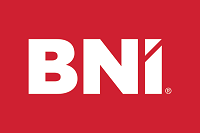Introduction
The Python programming language is one of the most widely used programming languages in the world. It was designed with a focus on code readability and simplicity, making it an ideal language for people who want to learn how to program. This course will teach you how to use Python from scratch by building real-world applications that solve problems using different modules and methods. You will also learn about some basic concepts of computer science such as data structures and algorithms through examples in this course.
This course is not just a recap of the language, but it is a collection of quizzes and exercises that I have collected and created myself.
This course is not just a recap of the language, but it is a collection of quizzes and exercises that I have collected and created myself. Each part of this course will be divided into four sections:
- A quiz
- An exercise (a problem to be solved)
- Explanations for how you should solve the problem using Python.
- Solutions to all problems in that section.
The book will be divided into four parts.
This course is divided into four parts. Each part has its own goals and learning material. You will be able to visit each one of these parts on your own time and pace, once you have finished other parts. Each part will also have its own exercises that you can solve before moving on to the next section.
Part 1 : Computing with Python
In this part, you will learn about:
- Introduction to Python;
- Types of variables;
- Data types and their values;
- Operators and expressions;
- Statements and their effects;
- Flow control statements (if, else, for, while);
Besides that, at the end of this part you will also know how to write programs using loops like while and for.
Part 2 : Python for Chemistry
In this section, you will learn how to import modules, perform basic arithmetic operations, handle user input and create a simple calculator. You will also create a simple graph using the module pyplot.
To start off the second part of the course, lets import some useful modules into our python environment by typing these commands in your terminal:
import os
import sys
Part 3 : Linear Algebra with Python
Linear algebra is the branch of mathematics that studies vector spaces and linear mappings between such spaces. The basic objects of study in linear algebra are vectors, which are geometric entities with both a magnitude and a direction. Vectors can be added to each other according to the rules of vector addition, subtracted from each other according to these same rules and scaled (multiplied by some scalar value) by a factor not equal to zero without changing their direction or magnitude.
Linear algebra is useful in many areas of mathematics, as well as in physics, computer science, statistics and engineering.
Part 4 : Calculator App with Tkinter GUI
We are going to build a simple calculator app with Tkinter GUI.
Tkinter is a python module that can be used to create GUI applications. It is an easy way to create simple GUI applications in Python as it is a Python wrapper around the Tk toolkit which is used for creating graphical interfaces in many scripting languages.
This course is different than others because in this course you don’t just learn about python you also learn about how to apply python in real world.
This course is different than others because in this course you don’t just learn about python you also learn about how to apply python in real world. Python is one such programming language that has gained quite a bit of popularity over the past few years, owing to its simplicity and ease of use. This is why it’s now being used in various industries for building websites and applications as well as automating tasks on existing systems (like web scraping). Some examples are:
- Django – The most popular framework for Python which lets you build web applications quickly using templates and libraries. It even has an integrated database layer so no need for SQL coding or heavy ORMs like MySQL etc…
- Scrapy – An open source web crawling framework written in Python3+ (with a very active community). It’s used by everyone from small startups all the way up through fortune 500 companies such as Sony Music Entertainment (Sony Music), TripAdvisor Inc., Expedia Inc., Bloomberg L.P., Wikipedia Foundation Inc., Zillow Group Inc., eBay Inc., Cisco Systems Inc..
Conclusion
That’s all for now. If you want to learn more about this course and how to enroll, please visit our website ( https://www.pythonprogramminglabs.com ). We look forward to your enrollment!

